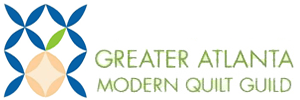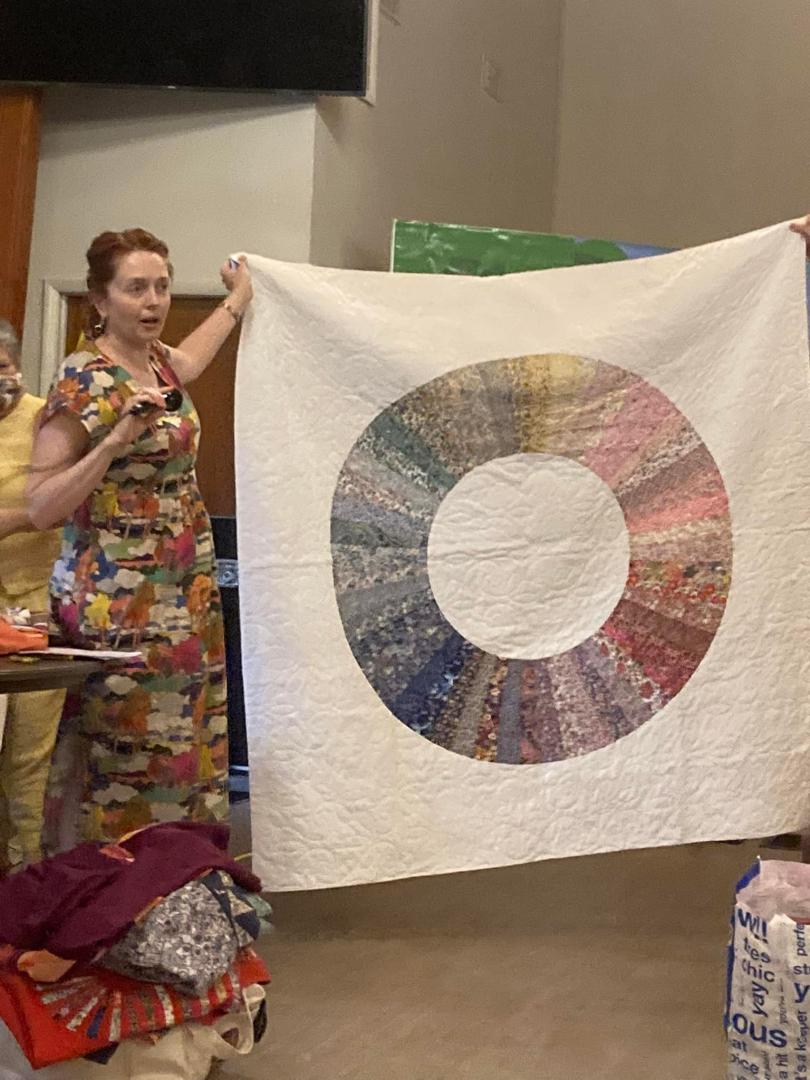July 2022 Meeting
July Meeting was all about paper piecing, taught by Jennifer McNeil. Show and tell pics coming soon!
Here is the supply list ( and some tips!) she referenced at the meeting:
View/Download PDF here.
Foundation Paper Piecing – Supply List:
– Paper for the patterns
o Copy paper – 100% recycled multipurpose paper (thinner and more pliable than non-recycled paper; Carolyn Friedlander’s choice; durable, though hard to rip off at the end of the project; good for larger shapes)
o Carol Doak’s Foundation Paper (easy to work with and remove; expensive)
o Newsprint (slightly thinner than quilting foundation paper; much cheaper) – recommended for most FPP
o Vellum (transparent, but delicate)
o June Taylor Perfect Piecing Paper (sturdy and transparent; expensive; does not need to be removed; great for tiny piecing and detail work)
– Rotary Cutter
o Recommended – 28mm rotary cutter (easier for small projects)
o You may also want a separate rotary cutter just for paper, since it dulls the blade
– Cutting Mat
– Ruler
o Recommended – Add a Quarter Plus
o For projects with tight seams, use an Add an Eighth Plus
o You can also use a regular ruler or the original Add a Quarter/Eighth ruler
– Thread
o 50wt cotton – good for most projects
o 80wt is recommended for small piecing
§ Aurifil – 80wt cotton
§ Decobob (Wonderfil) – 80wt polyester
– Extrafine Seam Ripper
o FPP uses a smaller than normal stitch length, so you will need a sharp seam ripper
– Pressing tool
o Seam roller (good for tiny piecing)
– Basic Sewing Supplies (pins, scissors, etc.)
– OPTIONAL:
o Lightbox
o Purple Thang or tweezers – helpful for removing paper at the end of the project
Tips:
– Use short stitch – 18-20 stitches per inch. The stitches should be tight enough to perforate the paper for easy paper removal, but not so tight that seam ripping becomes impossible.
– Use an 80/12 or 90/14 universal or sharp needle.
– When sewing, stitch two or three stitches beyond the drawn line. This allows the next line of stitches to lock the previous line of stitches in place.
– Iron without steam. Press carefully to avoid tucks in the fabric.
– Remove the paper at the end of the project.
– Fabric – no need to worry about bias!

